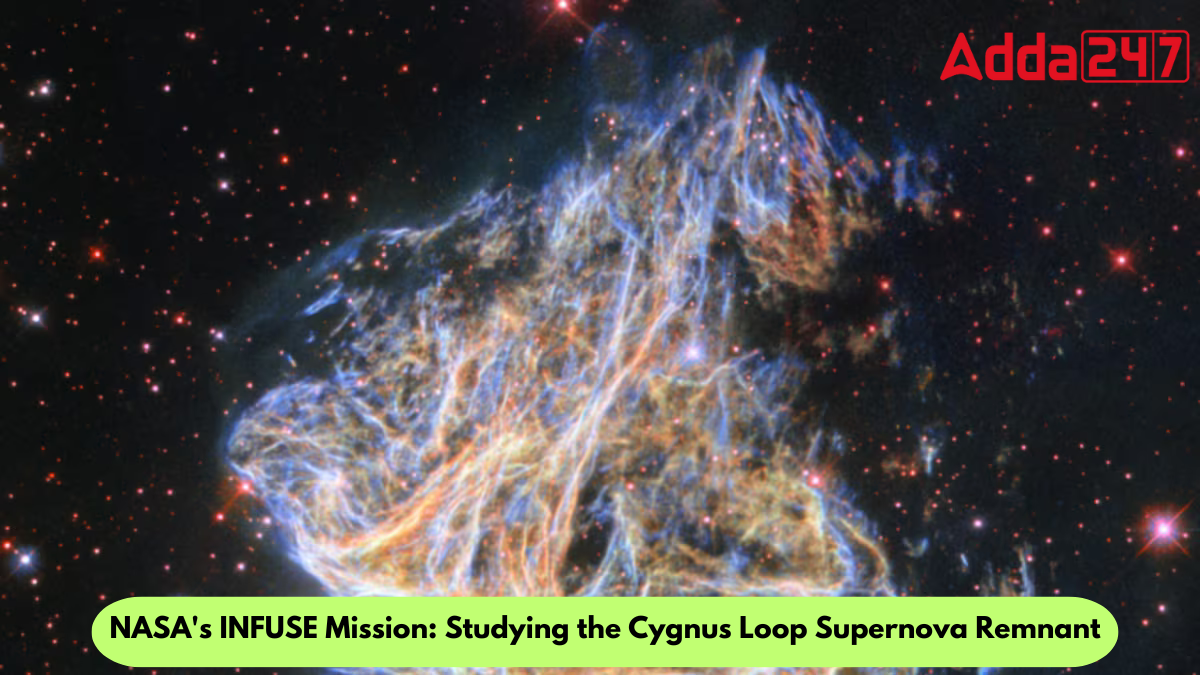Introduction to the INFUSE Mission:
NASA recently launched a sounding rocket as part of its Integral Field Ultraviolet Spectroscope Experiment (INFUSE) mission. This mission aims to study the Cygnus Loop, a 20,000-year-old supernova remnant located 2,600 light-years away from Earth. The Cygnus Loop offers a unique opportunity to explore the life cycle of stars and gain insights into how new star systems form in the universe.
Objective of the Mission:
The primary objective of the INFUSE mission is to deepen our understanding of the formation of new star systems in the universe. By analyzing the properties and characteristics of the Cygnus Loop, scientists aim to unravel the complex processes that occur after a massive star undergoes a supernova explosion.
The Cygnus Loop and its Significance:
Origin and Brightness of the Cygnus Loop:
The Cygnus Loop, also known as the Veil Nebula, is the remnant of a massive star that experienced a powerful supernova explosion.
The explosion was so luminous that it was visible from Earth due to the significant brightness of the event.
Role in Cosmic Evolution:
Supernovae like the Cygnus Loop play a pivotal role in cosmic evolution by dispersing heavy metals and essential chemical elements into space.
This dispersal is crucial for the formation of elements necessary for life, such as carbon, oxygen, and iron.
Insights and Exploration through the INFUSE Mission:
The INFUSE mission is poised to provide valuable insights into the Cygnus Loop’s far-ultraviolet wavelengths. These insights will help scientists understand the energy transfer mechanisms within the Milky Way galaxy and contribute to a deeper understanding of cosmic processes and the fundamental dynamics that have shaped the universe’s evolution over time.
About Supernovae:
A supernova is a spectacular and immensely powerful stellar explosion that occurs during the final stages of a massive star’s life cycle. It is one of the most energetic and luminous events in the universe, briefly outshining entire galaxies. There are two primary types of supernovae:
Type I Supernovae:
Result from the explosion of a white dwarf star in a binary system.
Often triggered by the accretion of matter from a companion star, leading to the white dwarf surpassing its Chandrasekhar limit.
Type II Supernovae:
Occur when massive stars, typically more than eight times the mass of the Sun, exhaust their nuclear fuel and collapse under their own gravity.
This collapse results in a catastrophic explosion.
Stages of Supernova:
Supernovae progress through several stages, including:
Precursor Stage: A massive star exhausts its nuclear fuel, leading to core collapse and the formation of a dense neutron star or black hole.
Core Collapse: Rapid gravitational collapse of the star’s core, causing an explosive rebound of the outer layers.
Expansion and Afterglow: The explosion drives the outer layers into space, creating an expanding shockwave and an observable afterglow.
Causes and Triggers:
Supernovae can be triggered by various mechanisms, including the exhaustion of nuclear fuel in massive stars, sudden ignition of nuclear fusion in white dwarfs, or the accretion of material onto white dwarfs in binary systems. Type II supernovae are primarily triggered by the inability of the star’s core to withstand gravitational forces, resulting in an explosive release of energy.
Significance in Cosmic Evolution:
Supernovae are central to cosmic evolution, as they disperse heavy elements created during the explosion into the interstellar medium. This process contributes to the formation of new stars, planets, and life itself. Moreover, supernovae are responsible for producing and distributing vital elements, profoundly influencing the chemical composition of galaxies and the entire cosmos.



 States and Capitals - How Many States in...
States and Capitals - How Many States in...
 Important Days in May 2025, List of Nati...
Important Days in May 2025, List of Nati...
 What is the Weight of Green Anaconda, Wo...
What is the Weight of Green Anaconda, Wo...

